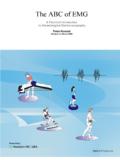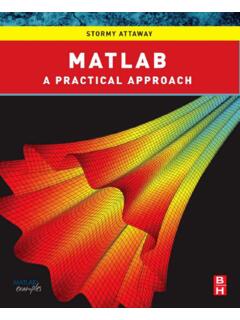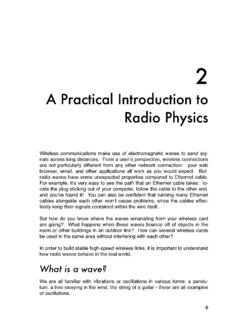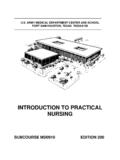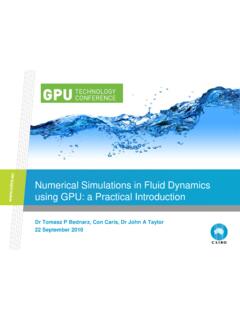Transcription of The ABC of EMG - Noraxon USA
1 IsIiiiilkjfkdjflkj dfdfe the abc of emg a practical introduction to Kinesiological Electromyography Peter Konrad Version March 2006 Noraxon INC. by: Noraxon , 0-9771622-1-4 ABC of EMG a practical introduction to Kinesiological Electromyography Page 2 ISBN 0-9771622-1-4 Copyright 2005 by Noraxon , Inc. Reproduction without written permission is granted to educational institutions for educational purposes only. Noraxon is a registered trademark of Noraxon , Inc. All rights reserved. All other company and product names contained herein may be trademarks or registered trademarks of their respective companies and are sole property of their respected owners. Printed by Noraxon , Inc. Noraxon Inc. 13430 N. Scottsdale Road, Suite 104 Scottsdale, Arizona 85254 Tel: (480) 443-3413 Fax: (480) 443-4327 E-mail: Support E-mail: Web Site: ABC of EMG a practical introduction to Kinesiological Electromyography Page 3 Contents.
2 SIGNAL ORIGIN AND ACQUISITION introduction & 5 Use and Benefits of 6 Signal 7 The Generation of the EMG 8 Signal Propagation and 9 Composition of EMG 10 Nature of the EMG 11 The Influence of detection 12 EMG 13 Computation of the EMG 14 Skin 15 Surface Electrode 16 Fine Wire 17 Guidelines Electrode 18 Specific Aspects of Electrode 19 Muscle Map 20 Muscle Map 21 Signal Check 22 EMG 25 Prepare EMG - Action 26 SIGNAL PROCESSING Signal Processing 27 Signal Processing 28 Signal Processing - Digital 29 Signal Processing Amplitude 30 Signal Processing ECG 36 Time Normalization for Repetition 37 Average EMG / Ensemble 38 EMG Amplitude 40 EMG Frequency 41 Timing Related 42 Thresholds Concepts to Define 43 EMG To Force 44 ABC of EMG a practical introduction to Kinesiological Electromyography Page 4 EMG ANALYSIS EMG as a Biomechanical 45 EMG Analysis Questions 46 EMG Analysis: On/Off?
3 47 EMG Analysis: More / less?.. 48 EMG Analysis: Muscle Timing?.. 49 EMG Analysis: How Much Activity?.. 50 EMG Analysis: How Much Fatigue?.. 51 EMG Analysis: Movement 52 Design of EMG Tests: Need of 53 Recommendations for Test 54 EMG Triggered to 55 Period Definition For 56 Comparison 57 Recommended EMG 58 EMG Guidelines, Societies, Search 59 The World of 61 ABC of EMG a practical introduction to Kinesiological Electromyography Page 5 introduction & Definition How to use this booklet This first edition of " the abc of emg " is primarily a short teaching manual concerned with summarizing selected scientific concepts as well as general contents and processes of the experimental technique. This booklet is not intended to replace the fundamental EMG literature (see chapter Recommended EMG Books , which is also used as ref-erence source for citations), especially when concerned with more ex-perience leading to an increased complexity of the problems tackled.
4 The main intention is to simplify the first steps in the use of EMG as research and evaluation tool and get started . It tries to overview and summarize the basic knowledge needed to apply and perform mean-ingful EMG setups and concentrates on practical questions and solu-tions. It is strongly recommended to study the scientific publications and textbooks related to a certain topic. This booklet cannot reflect the variety of different views, opinions and strategies that have to be considered for a responsible scientific use of EMG. Definition of EMG "Electromyography (EMG) is an experimental technique concerned with the development, recording and analysis of myoelectric signals. Myoelectric signals are formed by physiological variations in the state of muscle fiber membranes." (2).
5 Unlike the classical Neurological EMG, where an artificial muscle response due to external electrical stimu-lation is analyzed in static conditions, the focus of Kinesiological EMG can be described as the study of the voluntary neuromuscular activation of muscles within postural tasks, functional movements, work conditions and treatment/training regimes..is the study of muscle function through the inquiry of the electrical signal the muscles emanate. : A fundamental EMG text book. Basmajian&DeLuca: Mus-cles Alive (2) Fig. 2: Basmajian & DeLuca: Definition Muscles Alive (2 - p. 1) ABC of EMG a practical introduction to Kinesiological Electromyography Page 6 Use and Benefits of EMG Widespread use of EMG Besides basic physiological and biomechanical studies, kinesiological EMG is established as an evaluation tool for applied research, physiotherapy/rehabilitation, sports training and interactions of the human body to industrial products and work conditions: Typical benefits of EMG The use of EMG starts with the basic question: What are the muscles doing?
6 Typical benefits are: EMG allows to directly look into the muscle It allows measurement of muscular performance Helps in decision making both before/after surgery Documents treatment and training regimes Helps patients to find and train their muscles Allows analysis to improve sports activities Detects muscle response in ergonomic studies Medical Research Orthopedic Surgery Functional Neurology Gait & Posture Analysis Rehabilitation Post surgery/accident Neurological Rehabilitation Physical Therapy Active Training Therapy Ergonomics Analysis of demand Risk Prevention Ergonomics Design Product Certification Sports Science Biomechanics Movement Analysis Athletes
7 Strength Training Sports Rehabilitation Fig. 4: Direct look into the body / muscle function: EMG syn-chronized with video and other movement sensors. Software screenshot of MyoResearch XPTM - Noraxon INC. USA : Application areas of kinesiological EMG ABC of EMG a practical introduction to Kinesiological Electromyography Page 7 Signal Origin The Motor Unit The smallest functional unit to describe the neural con-trol of the muscular contraction process is called a Mo-tor Unit (Fig. 5). It is defined as ..the cell body and dendrites of a motor neuron, the multiple branches of its axon, and the muscle fibers that innervates it (5, p. 151). The term units outlines the behavior, that all mus-cle fibers of a given motor unit act as one within the innervation process. Excitability of muscle membranes The excitability of muscle fibers through neural control represents a major factor in muscle physiology.
8 This phenomenon can be explained by a model of a semi-permeable membrane describing the electrical prop-erties of the sarcolemna. An ionic difference between the inner and outer spaces of a muscle cell forms a resting potential at the muscle fiber membrane (approximately -80 to -90 mV when not contracted). This difference in potential which is maintained by physiological processes (ion pump) results in a negative intra-cellular charge compared to the external surface. The activation of an alpha-motor anterior horn cell (induced by the central nervous system or reflex) results in the conduction of the excitation along the motor nerve. Af-ter the release of transmitter substances at the motor endplates, an endplate potential is formed at the mus-cle fiber innervated by this motor unit. The diffusion characteristics of the muscle fiber membrane are briefly modified and Na+ ions flow in.
9 This causes a membrane Depolarization which is immediately restored by backward exchange of ions within the active ion pump mechanism, the Repolarization: Motor Unit : Motor unit. Adopted & modified from 2,7 : Schematic illustration of depo-larization / repolariza-tion cycle within excitable membranes + - +-+-Extracellular Intracellular Na+ Na+ K + K + - 80 mVolts Na+Na+K+K++ 30 mVCell - Membrane Resting potential DepolarisationNa+K + K + Repolarisation Na+Steady State at - 80mV due to ionic pump Increased Na -InfluxIncreased Na - Exflux Ion - Pump ElectricalgradientA - A-A - + - + - +-+-+-+-Extracellular Intracellular Na+ Na+ K + K + - 80 mVolts Na+Na+K+K++ 30 mVCell - Membrane Resting potential DepolarizationNa+K + K + Repolarization Na+Steady State at 80mV due to ionic pump Increased Na -InfluxIncreased Na - Efflux Ion - Pump ElectricalgradientA - A-A - ABC of EMG a practical introduction to Kinesiological Electromyography Page 8 The Generation of the EMG Signal The Action Potential If a certain threshold
10 Level is exceeded within the Na+ influx, the depolarization of the membrane causes an Action potential to quickly change from 80 mV up to + 30 mV (Fig. 7). It is a monopolar electrical burst that is immediately restored by the repolarization phase and followed by an After Hyperpolarization period of the membrane. Starting from the motor end plates, the action potential spreads along the muscle fiber in both directions and inside the muscle fiber through a tubular system. This excitation leads to the release of calcium ions in the intra-cellular space. Linked chemical processes (Electro-mechanical coupling) finally produce a shortening of the contractile elements of the muscle cell. This model linking excitation and contraction represents a highly correlated relationship (although weak exci-tations can exist that do not result in contraction).
